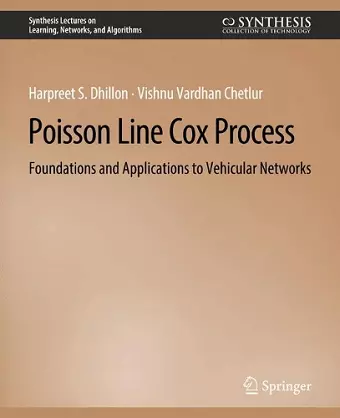Poisson Line Cox Process
Foundations and Applications to Vehicular Networks
Harpreet S Dhillon author Vishnu Vardhan Chetlur author
Format:Paperback
Publisher:Springer International Publishing AG
Published:24th Jun '20
Currently unavailable, and unfortunately no date known when it will be back

This book provides a detailed examination of the Poisson Line Cox Process and its applications in vehicular networks, making it essential for researchers and graduate students.
This book offers an in-depth exploration of the Poisson Line Cox Process (PLCP) and its relevance to vehicular networks. The PLCP is formed by placing points along each line of a Poisson Line Process (PLP) according to an independent Poisson Point Process (PPP). This framework allows for a comprehensive understanding of how vehicles can be modeled within a road network represented as a PLP, with vehicles acting as the points of the PLCP.
The initial chapters provide a historical overview of the development of PLP theory, highlighting significant contributions that have shaped the field. The book then delves into the construction and essential properties of both PLP and PLCP, ensuring that readers gain a solid foundation before exploring practical applications. Subsequent sections focus on the implementation of these models in various wireless networks, including vehicular communication and localization networks. Specific analyses, such as the signal-to-interference-plus-noise ratio (SINR) for different network configurations, are thoroughly discussed.
Drawing on original research, Poisson Line Cox Process stands out as the first book dedicated to a self-contained mathematical examination of the PLCP. It targets graduate students and researchers in academia and industry who possess a basic understanding of probability theory and point processes. The authors aim to present the material in an accessible manner, emphasizing pedagogical clarity while maintaining rigorous mathematical standards, making it suitable for a wide audience interested in stochastic geometry and vehicular networks.
ISBN: 9783031012518
Dimensions: unknown
Weight: unknown
131 pages